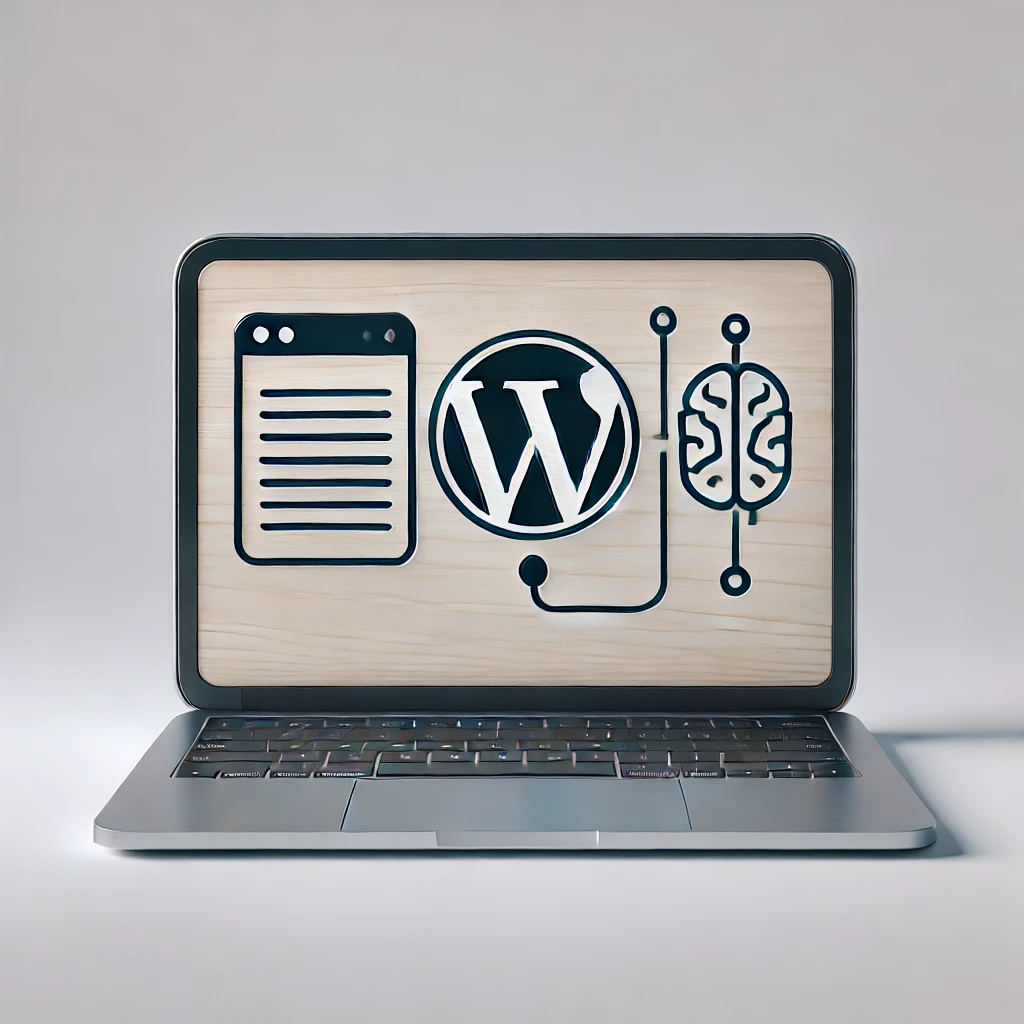In today’s fast-paced digital world, Artificial Intelligence (AI) is not just a buzzword; it’s a game-changer, especially for WordPress users. From enhancing user experience to supercharging SEO strategies, AI can revolutionize how you manage and optimize your website. But how exactly do you integrate AI into your WordPress site? This guide will take you through the process, offering advanced tips, examples, and visual aids to help you make the most of AI on your platform.
Step 1: Understand the Benefits of AI for WordPress
Integrating AI into your WordPress site can unlock a plethora of benefits that go beyond mere automation. Here’s why you should consider it:
- Enhanced User Experience: AI can offer personalized content recommendations, implement chatbots for real-time customer support, and optimize predictive search features. Imagine a website that learns from each visitor’s behavior and tailors content specifically for them—AI makes this possible.
- Advanced SEO Strategies: AI-driven tools can analyze content, predict search engine trends, and even help you uncover untapped keyword opportunities. This can significantly improve your site’s visibility and ranking.
- Automation of Routine Tasks: Beyond content curation, AI can manage complex tasks like A/B testing, data analysis, and even personalized marketing campaigns, saving you time and effort.
Step 2: Choose the Right AI Tools and Plugins
The key to successfully integrating AI into your WordPress site lies in selecting the right tools. Here’s a closer look at some AI-powered plugins, with examples of how they can be used:
- Yoast SEO with AI Integration: Yoast has evolved to include AI-driven keyword analysis and content suggestions. For example, AI can help identify long-tail keywords that are more likely to convert, thereby improving your content’s relevance.
- Akismet for AI-Powered Spam Prevention: Akismet uses AI to filter out spam comments, protecting your site from harmful content. Think of it as an intelligent gatekeeper that learns from every piece of spam it encounters, getting better at its job over time.
- WordLift for Structured Data: WordLift uses AI to add structured data to your content, making it more discoverable by search engines. For instance, by marking up your content with AI, you can improve your chances of appearing in Google’s rich snippets.
- WP-Chatbot for AI-Driven Customer Interaction: Imagine a chatbot that not only answers queries but also learns from each interaction to provide better responses. WP-Chatbot brings this level of sophistication to your site.
Step 3: Install and Configure Your AI Plugins
Installing and configuring AI plugins is straightforward, but there are advanced settings you should consider to maximize their effectiveness. Here’s how to do it:
- Install the Plugin: Navigate to your WordPress dashboard, go to the Plugins section, click “Add New,” and search for your chosen AI plugin. Click “Install Now” and then “Activate.”
- Advanced Configuration: After activation, delve into the plugin’s advanced settings. For example, in Yoast SEO, you can fine-tune AI-driven keyword suggestions to focus on specific regions or niches, providing a more targeted SEO strategy.
- Visual Aids for Installation: [Insert Screenshot Here]—Visual aids like screenshots can guide you through the plugin installation process, ensuring that you don’t miss any crucial steps.
- Test and Optimize: Test the AI functionalities on a staging site before going live. For instance, run the chatbot in various scenarios to ensure it handles different types of user queries effectively.
Step 4: Leverage AI for Advanced Content Creation and Management
AI is a powerful ally in content creation and management. Here’s how you can harness its capabilities:
- AI-Powered Content Generation: Tools like Jasper (formerly Jarvis) can help generate high-quality content tailored to your audience. For example, Jasper can draft blog posts, product descriptions, and social media updates based on specific prompts you provide.
- Image Optimization with AI: Use AI-driven tools like Smush or EWWW Image Optimizer to automatically compress images without losing quality. This not only improves load times but also enhances your site’s SEO.
- Personalized Content Recommendations: Plugins like Recombee analyze user behavior to suggest relevant content. Imagine a visitor who reads a blog post about digital marketing; the AI can then recommend related articles or products, increasing engagement.
Step 5: Monitor, Analyze, and Optimize Your AI Integration
After integrating AI into your WordPress site, continuous monitoring and optimization are essential. Here’s how to do it:
- Use Analytics Tools: Tools like Google Analytics can help you track how AI is impacting user engagement, SEO rankings, and overall site performance. For example, if AI-driven content recommendations are leading to longer session durations, you know the integration is working.
- Regular Updates and Adjustments: AI technology is rapidly evolving, so regularly update your AI plugins to access new features and improvements. Adjust the settings based on performance data—for instance, fine-tune your chatbot’s responses based on common user queries.
Conclusion: Unlocking the Full Potential of AI on WordPress
Integrating AI into your WordPress site isn’t just about keeping up with trends; it’s about harnessing cutting-edge technology to offer a superior user experience, enhance SEO, and streamline your workflow. Whether you’re a WordPress beginner or a seasoned webmaster, AI offers tools and functionalities that can elevate your website to new heights.
So, are you ready to unlock the full potential of AI on your WordPress site? Start by exploring the plugins and strategies mentioned in this guide, and watch as your website transforms into a smarter, more efficient, and highly engaging platform.
